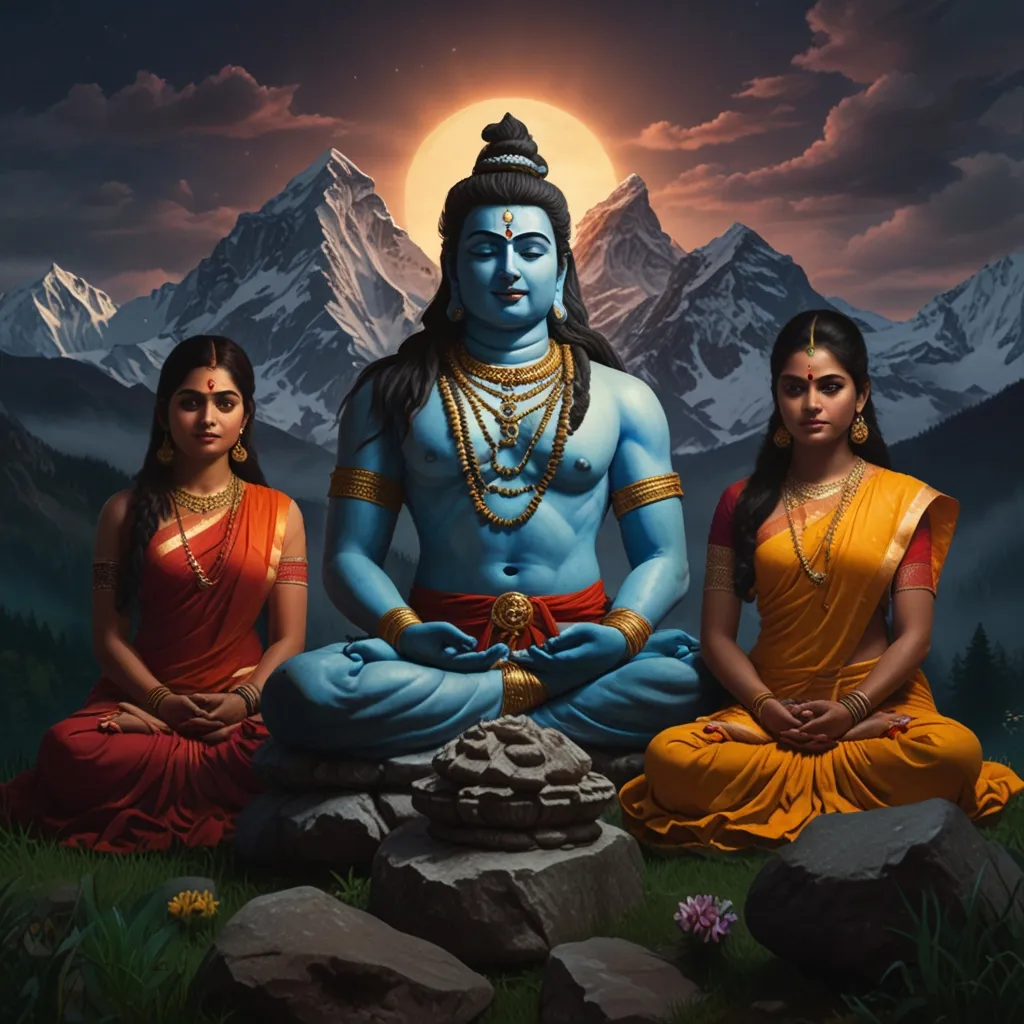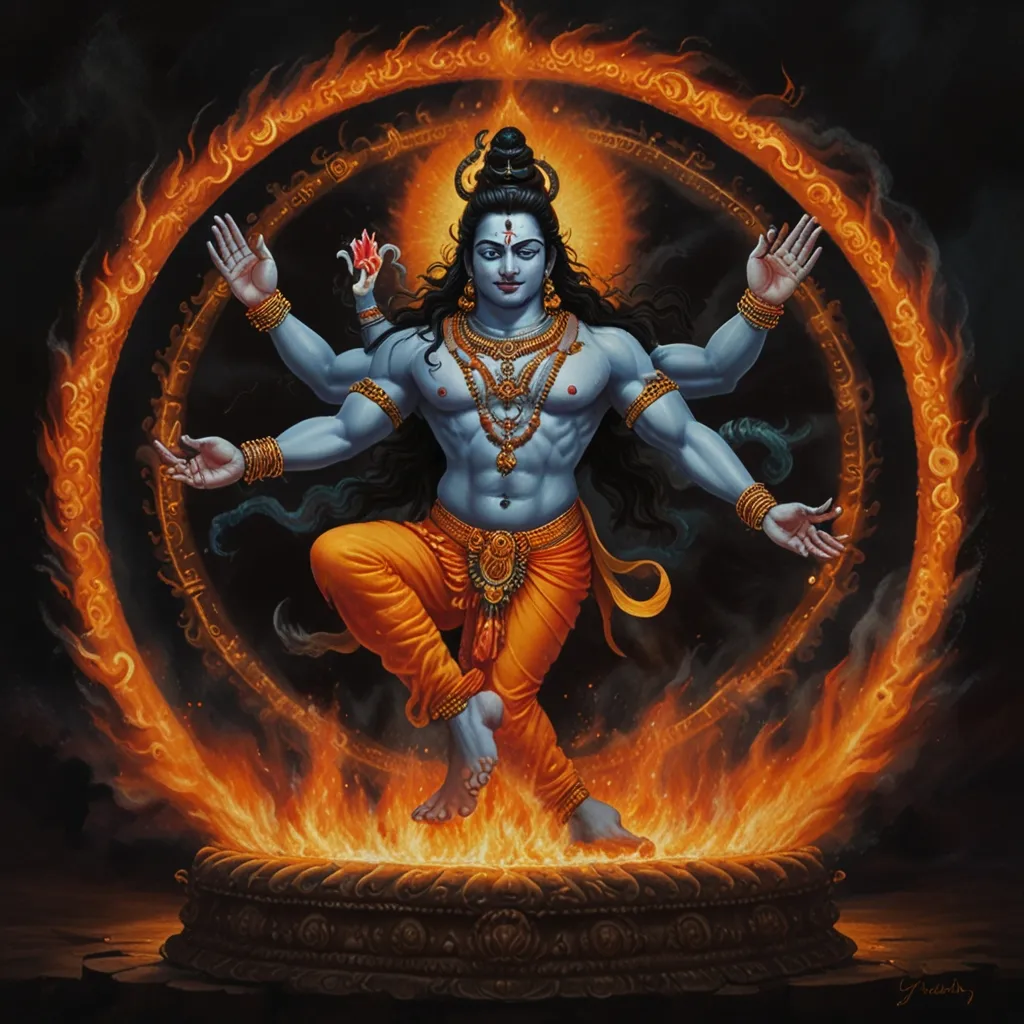In the vast universe of Hindu mythology, there are countless stories that have been handed down through generations, each one packed with unique messages and significance. One such tale is the legend of Shiva and Brahma’s competition. This story not only shines a light on the characters of these two mighty deities but also delves deep into their roles within the cosmos.
The tale kicks off with a grand debate between Vishnu and Brahma, two of the most respected gods in Hinduism. They were locked in an argument over who among them was superior. This heated debate drew the attention of Shiva, who decided to step in and resolve the matter once and for all. To do this, Shiva manifested as a colossal pillar of fire that stretched infinitely in both the heavens and the netherworlds. This pillar was so immense that it seemed to have no beginning or end.
Determined to prove his superiority, Vishnu transformed into a boar and burrowed deep into the earth to find the base of this fiery pillar. He dug for an unimaginable amount of time but ultimately failed to reach the bottom. Accepting his limitations, Vishnu acknowledged Shiva’s supremacy and gave up the quest. However, Brahma wasn’t as easily deterred. He ascended as a swan, falsely claiming he had seen the summit of the pillar. Shiva, angered by Brahma’s deceit, cursed him with perpetual old age and the loss of all his worshippers.
This curse is why Brahma is often depicted as an old, frail man. Despite this, his legacy lives on in the few temples dedicated to him. The most notable of these is the Pushkar Temple in Rajasthan, a serene spot in the middle of a lake. There are other temples dedicated to Brahma in Madhya Pradesh and Kerala, though they are less known and often nestled away in remote locations.
Brahma’s story is layered with symbolism and intrigue. As the creator god, he’s responsible for bringing everything into existence. His role is crucial, yet he often finds himself overshadowed by the more dynamic and versatile Vishnu and the powerful Shiva. Brahma’s tie to the Vedas, the ancient Hindu scriptures, is significant. He’s said to hold and narrate the Vedas, embodying the knowledge and wisdom they contain.
On the flip side, Shiva is the destroyer. His purpose is to bring about the end of an era to make way for new beginnings. His role is both destructive and creative; he destroys the world’s imperfections to prepare it for renewal. Shiva is often depicted with four arms, a garland of skulls, a third eye, and a snake around his neck. Known as Nataraja, he is the lord of the dance, and his cosmic rhythm sustains the universe.
But Shiva’s power isn’t just limited to his ability to destroy; it’s also in his capacity to meditate and find inner peace. Often shown in a yogi pose, deep in contemplation, Shiva’s association with the bull Nandi symbolizes his connection to the earth and all its creatures. Shiva’s female partner, Parvati, is a powerful goddess herself, embodying the feminine aspects of creation and destruction.
The competition between Shiva and Brahma serves as a powerful reminder of the delicate balance within the universe. It highlights the importance of humility and the dangers of false pride. Brahma’s downfall didn’t come from his lack of power or wisdom but from his arrogance and dishonesty. Shiva’s supremacy, on the other hand, was recognized by Vishnu, who accepted the limits of his own abilities.
This story also sheds light on the cyclical nature of creation and destruction. Brahma creates the universe, Vishnu sustains it, and Shiva destroys it to recreate it anew. This cycle is eternal, reflecting the ever-changing nature of life and the cosmos. Each deity plays a vital role in this cycle, ensuring that the universe remains balanced and harmonious.
In Hindu mythology, gods and goddesses aren’t merely figures of worship; they’re symbols of various aspects of human nature and the universe. Brahma represents creation and the beginning of all things, while Shiva embodies the end and the start of anew. Vishnu, the preserver, ensures that the balance between good and evil is maintained.
The legend of Shiva and Brahma’s competition is a rich tapestry of myth and symbolism, offering deep insights into the nature of the universe and the roles of its deities. This story has been retold and revered for centuries, constantly reminding us of the importance of humility, the power of creation and destruction, and the eternal cycle of life and death.
Revisiting these tales underlines the interconnectedness of all things. It’s a reflection of our own lives, filled with ups and downs, beginnings and endings, and the ever-present need for balance. These stories connect us to our roots, reminding us that no matter how grand or powerful one becomes, humility and honesty are the virtues that truly define us. So the next time life gets chaotic, think back to this legend. It might just offer the perspective you need to navigate your own path.






